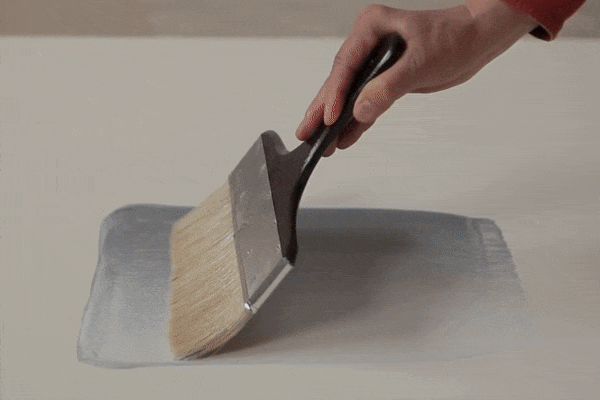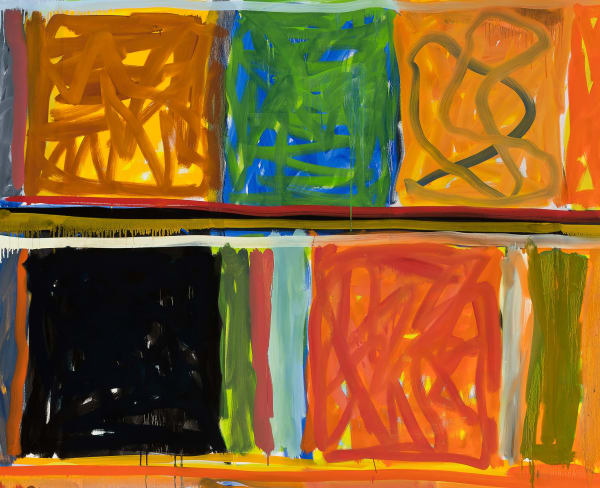-

-
"Dialogue is not a simple exchange of ideas; it is an encounter in which we transcend the boundaries of self and enter into a shared realm of experience."
— Lee Ufan
-
 Lee Ufan. 'Dialogue', 2006 (detail) © Gary Tatintsian Gallery and the artist
Lee Ufan. 'Dialogue', 2006 (detail) © Gary Tatintsian Gallery and the artist -
Being in the prism of a very physical attitude toward his work, the artist holds his breath for a minute or two before exhaling to make the line as straight as possible. The hand, while exhaling, is directed by a movement related to an absence of thought. “The body reacts,” explains the artist. The brushstroke involves the whole canvas by delimiting a new space.
-


 Lee Ufan in the studio, 2014 © Château de Versailles and the artist
Lee Ufan in the studio, 2014 © Château de Versailles and the artist -
Lee Ufan's research only succeeds when “the vibrations of the whole space resonate together.” In starting to work on the Dialogue series, the artist selected the gray color in order to exteriorize the reality of the world. As a color “which does not exist, between the inside and the outside.” Stepping from the emptiness and blur of gray shades and white canvas, the artist found a new perspective for self-perception and motion in space.
-

Lee Ufan (on the left) and other members of the Mono-ha group at the Seibu Museum of Art, Tokyo, June 25, 1987 © ANZAœ Photo Archive, National Art Center, Tokyo
-
 Lee Ufan at the opening of a personal exhibition at Gary Tatintsian Gallery, 2014 © Gary Tatintsian Gallery and the artist
Lee Ufan at the opening of a personal exhibition at Gary Tatintsian Gallery, 2014 © Gary Tatintsian Gallery and the artist -
-
Viewing Rooms
Viewing Room | Dialogue by Lee Ufan
Past viewing_room










